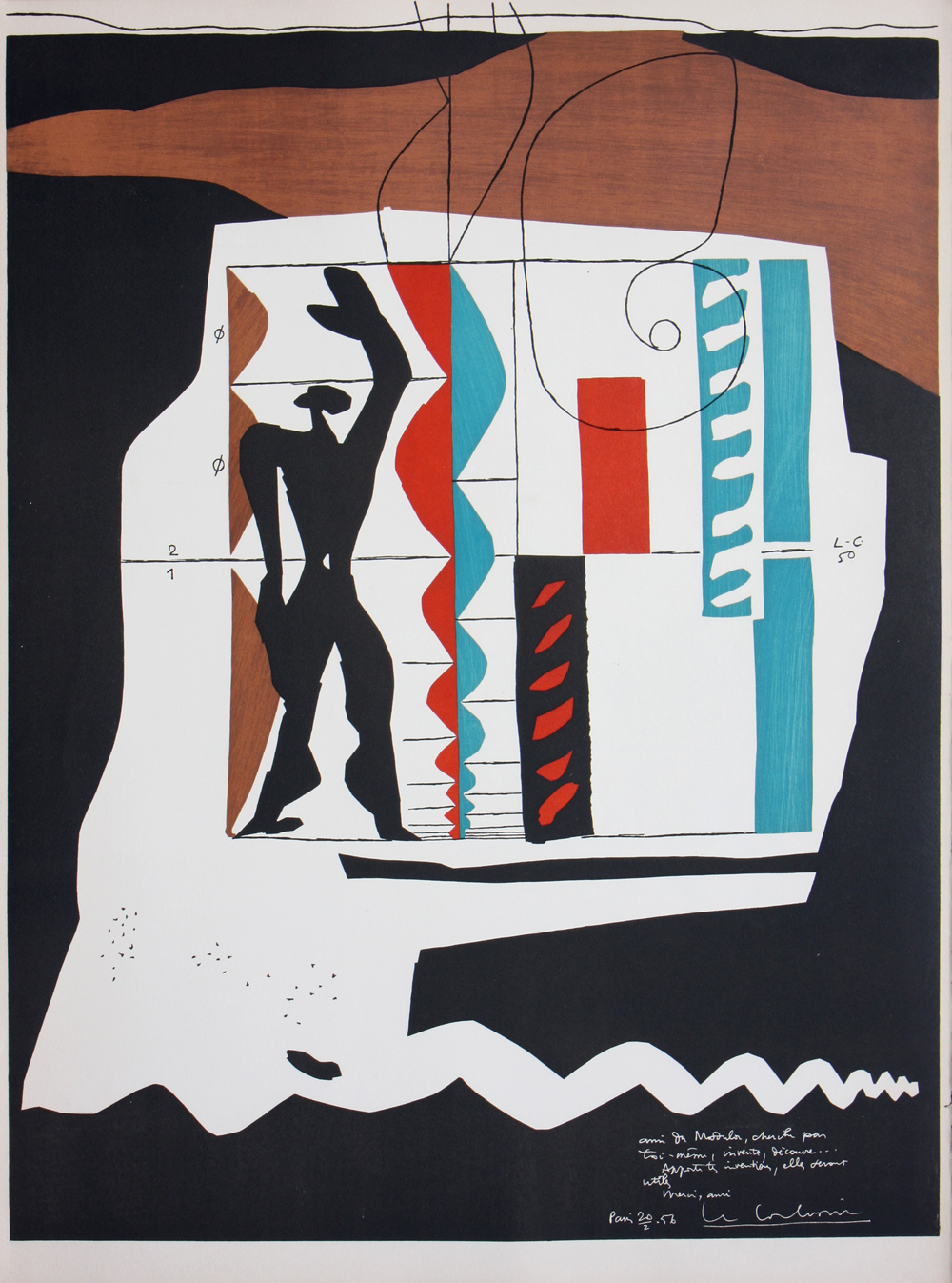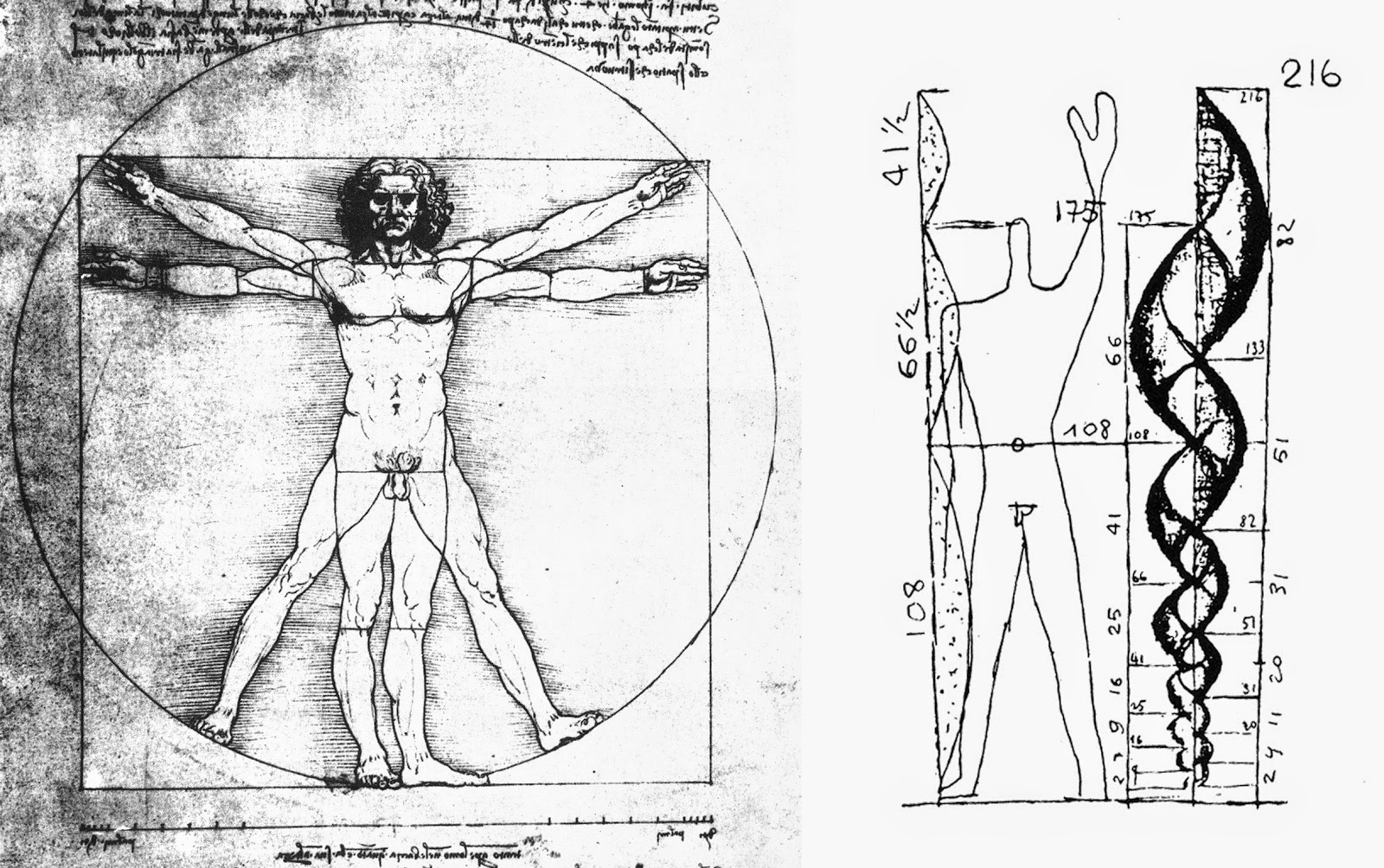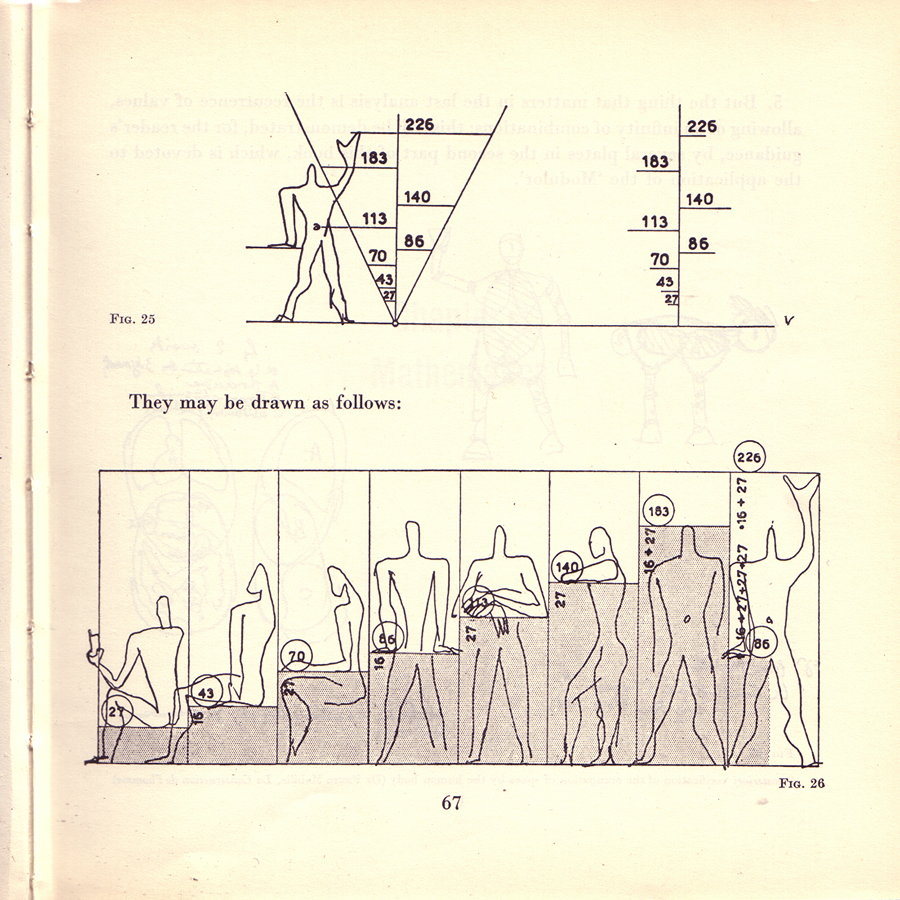
Shop LE MODULOR / FIGURE Standard Fountain Pen by Le Corbusier (PLC01F
The Modulor—Measure and Proportion 21.4. - 26.11.2023 Pavillon Le Corbusier The search for ideal dimensions and a universally applicable system of proportions occupied Le Corbusier (1887-1965) throughout his life.

an image of a line drawing with numbers on it
Le Corbusier (Charles-Édouard Jeanneret), 1920, Nature morte ( Still Life ), oil on canvas, 80.9 cm × 99.7 cm (31.9 in × 39.3 in), Museum of Modern Art, New York. Charles-Édouard Jeanneret was born on 6 October 1887 in La Chaux-de-Fonds, a small city in the French-speaking Neuchâtel canton in north-western Switzerland, in the Jura.

Le Corbusier Le Modulor ca. 1990s Catawiki
Le Corbusier - the Modulor Cover of "Der Modulor" by Le Corbusier (Ed.5, 1985) Between 1942 and 1955 the architect Le Corbusier (1887-1965) developed a universal measuring system known as the "Modulor". The Modulor represented an attempt to give architecture a mathematical order oriented to a human scale.

Le Corbusier, Modulor 1962 For Sale Denis Bloch Fine Art Gallery
The Modulor was originally intended to measure Le Corbusier's height, 5,74 ft (1.75 m), as was the Oktameter reference model mentioned later in this article, before finally settling on 1.829 meters to adjust it to the round figure of 6 feet.

Le Corbusier the Modulor ETH Library ETH Zurich
Le Corbusier based his very first Modulor system on the measurements of what he perceived to be a typical " French height" of 1.75 meters or 5 feet 8 inches tall, but ultimately, he decided.

modulor Le Corbusier Architecture People, Architecture Sketchbook
Le Corbusier, (born October 6, 1887, La Chaux-de-Fonds, Switzerland—died August 27, 1965, Cap Martin, France), internationally influential Swiss architect and city planner, whose designs combine the functionalism of the modern movement with a bold sculptural expressionism.He belonged to the first generation of the so-called International school of architecture and was their most able.

Le Corbusier (CharlesEdouard Jeanneret) El Modulor (The Modulor)
Modulor, Le Corbusier, 1956, Lithographie (1. Edition). Abbildung: Museum für Gestaltung Zürich, Plakatsammlung / ZHdK. The Modulor system of proportions and measurements, published in 1950, combines various sets of ideas. In 1944, with a view to reconstruction after the end of World War II, Le Corbusier initially attempted to define a few.

El Modulor Le Corbusier
Corbusier In Le Corbusier: The war years of Le Corbusier.first bases of the "Modulor" concept, a scale of harmonic measures that set architectural elements in proportion to human stature. This theory was finally perfected in 1950, and Le Corbusier used it in designing all his subsequent buildings, wishing them to incorporate "a human scale."

El modulor de Le Corbusier Buscando la proporción perfecta Le
Le Corbusi er's search for a proportional system to create harmony resulted in the Modulor between 1943-1955. Modulor The Modulor was similar to the Vitruvian Man is the sense they both dealt with human proportions. In part of the system, a (scale) six-foot tall man with arm raised to 7'5" was inserted into a square.

Le Corbusier Modulor based on the Fibonacci sequence and the Golden
Sequences of the Scale. According to Le Corbusier, the Modulor is a tool for designers, architects, and constructors. The architect stated that this tool would help professionals to design buildings of beautiful proportions from prefabricated materials. Mathematically, the Modulor scale is simply a pair of sequences of measurements, called the.

Le Corbusier The Modulor Series the perfect proportion genius
In his presentation of the Modulor, Le Corbusier insisted on measurements, proposing an analogy with music, a field he was familiar with: according to him, the Modulor was 'a tool of linear or optical measures, similar to musical script' ( Le Corbusier 1950: 17; 1956: 17 ).

Pin by Nick Otstavnov on Grids Le corbusier, Corbusier, Unite d
The Modulor is an anthropometric scale of proportions devised by the Swiss-born French architect Le Corbusier (1887-1965). It was developed as a visual bridge between two incompatible scales, the Imperial and the metric systems. It is based on the height of a man with his arm raised.

Le Corbusier's The Modulor a photo on Flickriver
The significance of Le Corbusier's "Modulor" in architectural theory is profound, shaping how architects approach design and space. Here are 10 key points that highlight its significance: 1. Human-Centric Design: "Modulor" pioneered a novel approach emphasizing human proportions as the basis for architectural harmony and scale.

LeCorbusierlemodulor Ada 13
Le Corbusier stands with a concrete gliph of Modulor Man The Modulor was, however, as arbitrary as any human measurement: its six-foot basis was plucked out of the air, there was no reason the Modulor Man couldn't be five foot ten or six foot two. As is often said, a six-foot rule is hardly fair to women and children.

Modulor Pavillon le Corbusier eGuide
Modulor I and II Bookreader Item Preview. Modulor I and II by Le Corbusier, 1887-1965; Le Corbusier, 1887-1965. Modulor 2. English. 1980. Publication date 1980 Topics Modular coordination (Architecture), Ratio and proportion Publisher Cambridge, Mass. : Harvard University Press

Modulor, Le Corbusier. Il Modulor è una scala di proporzioni basate
eGuide eGuide Modulor 09 g The Modulor system of proportions and measurements, published in 1950, combines various sets of ideas. In 1944, with a view to reconstruction after the end of World War II, Le Corbusier initially attempted to define a few basic dimensions for use on the construction site, all of them related to the human body.